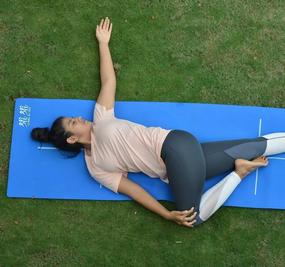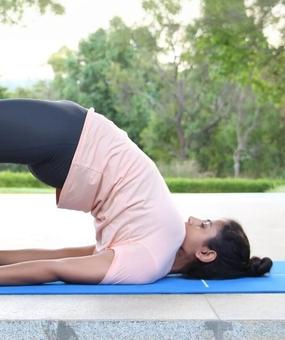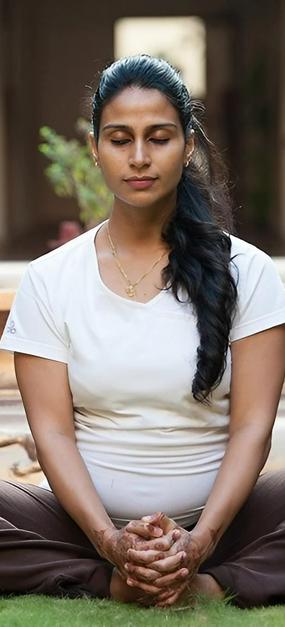Nauka = Boat, Asana = Posture or Pose
This yoga posture has been named after the shape it takes – that of a boat. Naukasana is prounced as NAUK-AAHS-uh-nuh.
How to do Naukasana
- Lie on your back with your feet together and arms beside your body.
- Take a deep breath in and as you exhale, lift your chest and feet off the ground, stretching your arms towards your feet.
- Your eyes, fingers and toes should be in a line.
- Feel the tension in your navel area as the abdominal muscles contract.
- Keep breathing deeply and easily while maintaining the pose.
- As you exhale, come back to the ground slowly and relax.
- It also forms a part of the Padma Sadhana sequence, where this yoga pose is practiced after Dhanurasana (Bow Pose).
Naukasana Video
Benefits of the Naukasana
- Strengthens the back and abdominal muscles
- Tones the leg and arm muscles
- Useful for people with hernia
- Contraindications of the Naukasana – Boat Pose
- Do not practice this yoga pose if you have low blood pressure, severe headache, migraine, or if you have suffered from some chronic diseases or spinal disorders in the recent past.
- Asthma and heart patients are advised to avoid this pose.
- Women should avoid doing Boat pose (Naukasana) during pregnancy and during the first two days of the menstrual cycle.
FAQ’s on Naukasana (Boat Pose)
Naukasana or the boat pose – comes from the Sanskrit word nauka means boat and asana means posture or pose. In this asana, your body comes in the shape of a boat.
Benefits of Naukasana – Strengthens the muscles of the abdomen, arms, thighs, and shoulders, Organs of the abdomen like liver, pancreas, and kidney function better, Regulates the flow of blood. Useful for people with hernia.
Navasana or Paripurna Navasana or Boat pose or Full Boat pose.
Lie on your back with your feet together and arms by your sides., Take a deep breath in and as you exhale, lift your chest and feet off the ground, stretching your arms towards your feet. Your eyes, fingers, and toes should be in one line., Be aware of the tension in your navel area. Keep breathing deeply and easily while maintaining stillness in the pose, As you exhale, come back to the ground slowly and relax.
Don’t do Parvatasana in spinal injury and spinal abnormalities, frozen shoulder, and arthritis.
The dizziness is due to vertigo or not proper yoga postures or practicing at a high speed or being dehydrated.
Yes, the regular practice of these asanas has shown a reduction in the belly as it tones the abdomen.















